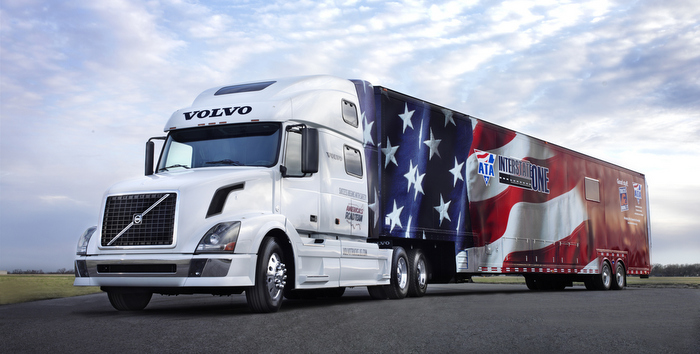Standing in the presence of the country’s top 19 professional truck drivers who were named to captain ATA’s America’s Road Team, one stat stood out among all others—30.3 million combined accident-free miles. These drivers are the face of the 3.2 million professional drivers on the road today, and their outstanding safety records are humble reminders of one simple fact: On-road safety is firmly in the hands (and feet) of the truck’s driver.
That’s not to say that fleet managers don’t play a role in safety. Spec’ing safety equipment is important in today’s highly-competitive market where margins thinner than ever. Beyond the emotional and, perhaps, reputational cost of an accident, fleets are well aware of the financial costs of an incident and downtime. That’s why truck OEs continue to place a strong focus on safety equipment offerings.
“Fleets can calculate what an accident costs them,” said Magnus Koeck, Volvo Trucks vice president of marketing and brand management. “We have the safety calculator and we walk customers through the savings of safety systems in the case of an incident. Yes, some safety systems might be optional, but that investment is small compared to how much safety matters. In the long run, it’s worth it. And sure, safety options might cost a couple extra thousand dollars, but today’s fleets are spec’ing them.”
Take, for example, the Volvo VNL 780 that will be driven by the Road Team as they travel across the country spreading the good word of trucking. It’s decked out with safety features: High-strength steel cab that meets the Swedish Impact Test standard; drive-side airbag; Volvo Enhanced Stability Technology; and Volvo Enhanced Cruise, which includes front and side warnings, stationary object detection and adjustable time gap, just to name a few features. And that’s for the country’s safest drivers. So why should any other driver be given any less?
In addition to available safety systems, other truck equipment that makes the driver’s job easier can contribute to safety. Take the much talked about automated manual transmissions (AMT). Fleet Equipment has spilled plenty of ink talking about the efficiency benefits of these transmissions, but Volvo’s Koeck shared a surprising statistic from an ATA study: Trucks outfitted with AMTs are 26% less likely to be involved in an accident than manual transmission-outfitted trucks. That can be attributed to AMTs cutting down on fatigue and eliminating the need for the driver to concentrate the gear selection and shift his or her focus to the road. The Volvo VNL 780 that will be driven by the Road Team is equipped with Volvo’s I-Shift AMT.
Truck manufacturers are quick to point out that safety systems like lane departure and advanced cruise control technologies aren’t “accident avoidance” but more “collision mitigation and reduced severity.” The responsibility is still firmly on the driver’s shoulders. Yet, accidents happen. If a piece of equipment designed for efficiency and integration, like an AMT, can produce a tangible safety benefit – just imagine what the latest safety systems could save and not just in terms of the bottom line.














